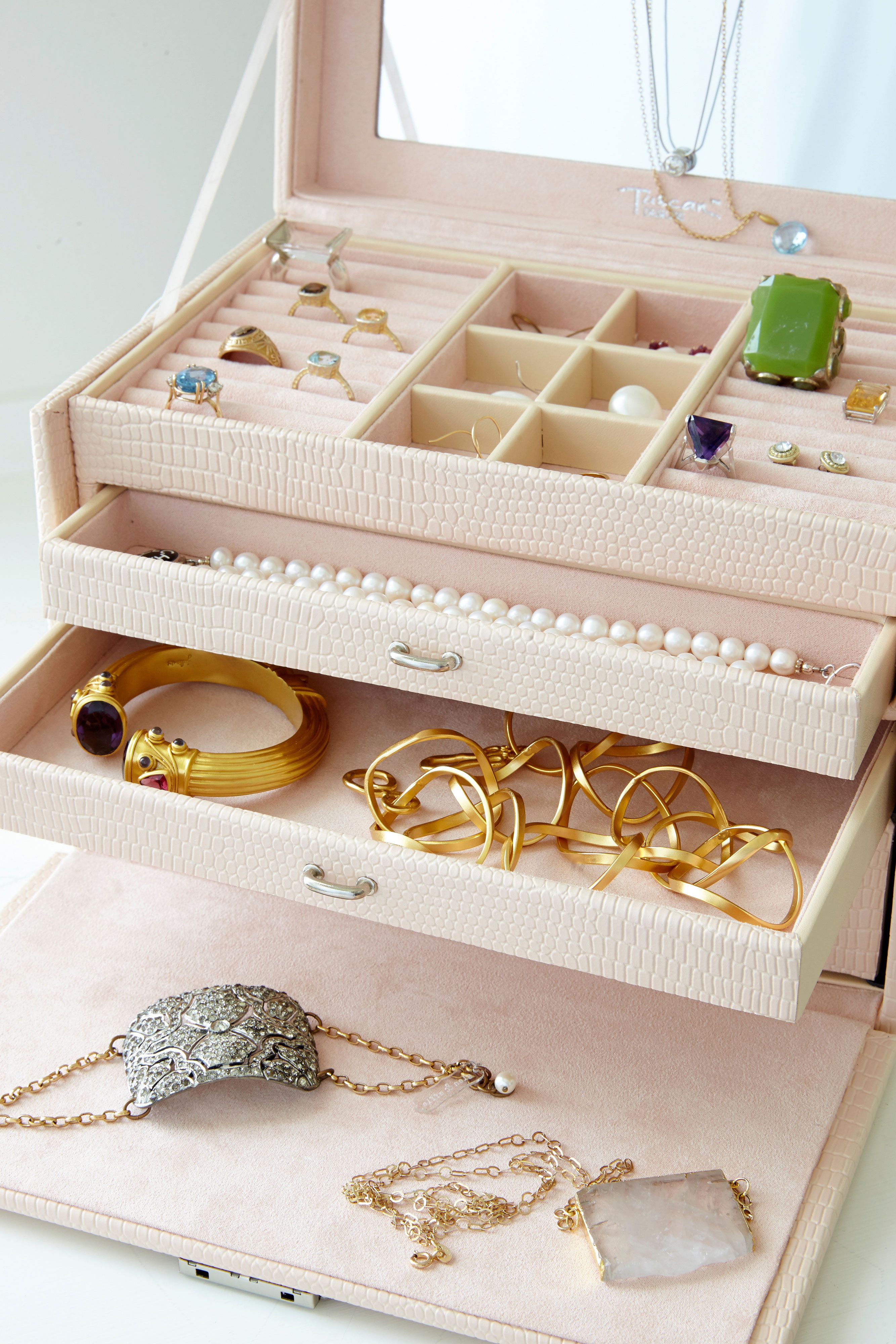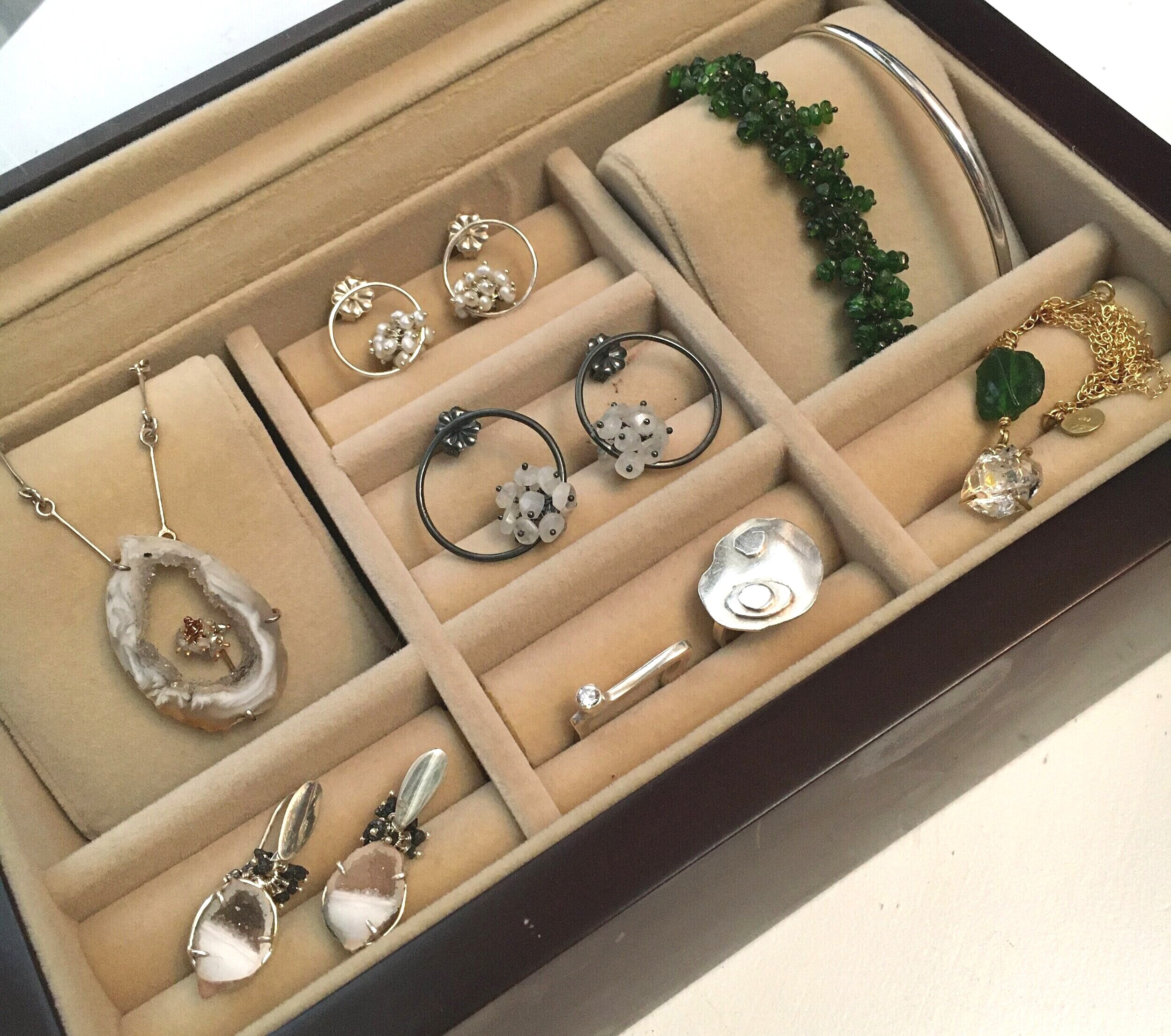- All
- Product Name
- Product Keyword
- Product Model
- Product Summary
- Product Description
- Multi Field Search
Views: 199 Author: XianDa Publish Time: 2024-12-03 Origin: Site

Content Menu
● How to Clean Antique Jewelry Boxes
>> Why Clean Your Antique Jewelry Box?
>> Supplies Needed for Cleaning
>> Step-by-Step Cleaning Process
>>> Step 1: Empty the Jewelry Box
>>> Step 2: Dust and Debris Removal
>>> Step 3: Prepare Cleaning Solution
>>> Step 4: Clean the Exterior
>>> Step 5: Clean the Interior
>>> Step 7: Optional Sanitizing
>> Maintenance Tips for Antique Jewelry Boxes
>> Understanding Different Materials
>>> Wooden Boxes
>>> Metal Boxes
>> The Importance of Professional Restoration
>> Storing Your Jewelry Safely
>> The Role of Jewelry Suppliers
>> Conclusion
Antique jewelry boxes are not only functional but also serve as beautiful pieces of art that can hold sentimental value. Cleaning these boxes requires careful attention to preserve their integrity while ensuring they remain a suitable home for your treasured jewelry. This guide will provide you with a comprehensive step-by-step approach to cleaning antique jewelry boxes, along with tips on maintenance and care.



Cleaning your antique jewelry box serves multiple purposes:
- Preservation: Regular cleaning helps maintain the materials and craftsmanship of the box.
- Protection: A clean box protects your jewelry from dust, dirt, and potential damage.
- Aesthetic Appeal: A well-maintained jewelry box enhances the overall look of your collection.
Before you begin, gather the following supplies:
- Soft microfiber cloths
- Mild dish soap or a specialized jewelry cleaner
- Warm water
- Soft-bristled toothbrush
- Lint roller or adhesive tape
- Vacuum cleaner with a brush attachment
- Cotton swabs
- Optional: UV sanitizing spray
Start by removing all jewelry from the box. Lay out your pieces on a soft surface to prevent scratching. This is also a great opportunity to inspect each piece for any needed repairs.
Use a lint roller or adhesive tape to gently remove dust and debris from the interior of the box. If you have a vacuum cleaner with a brush attachment, use it to carefully clean hard-to-reach areas without damaging the fabric or lining.
Mix a few drops of mild dish soap with warm water in a bowl. Avoid using harsh chemicals that could damage the materials of your jewelry box.
Dampen a microfiber cloth in the soapy solution and wring it out thoroughly. Gently wipe down the exterior of the jewelry box, paying attention to any ornate details. For intricate designs, use a soft-bristled toothbrush to reach crevices.
For velvet-lined boxes, use a soft brush or toothbrush dipped in soapy water to gently scrub any stains or dirt. Be careful not to oversaturate the fabric; excess moisture can lead to mold or mildew.
After cleaning, take another cloth dampened with plain water and wipe away any soap residue. Follow up by drying all surfaces with a clean, dry microfiber cloth. Ensure that no moisture is left inside before placing your jewelry back.
To further protect your jewelry box, consider lightly spraying it with a UV sanitizing spray designed for fabrics. This can help eliminate bacteria and odors without damaging the materials.
1. Regular Dusting: Make it a habit to dust your jewelry box regularly to prevent buildup.
2. Avoid Direct Sunlight: Keep your jewelry box out of direct sunlight to prevent fading and deterioration of materials.
3. Store Properly: Place your box in a cool, dry area away from humidity and temperature fluctuations.
4. Handle with Care: When opening or closing your box, do so gently to avoid damaging hinges or clasps.
- Using Harsh Chemicals: Always opt for mild cleaning solutions; harsh chemicals can damage antique finishes.
- Over-Wetting: Excess moisture can warp wood and damage fabric linings.
- Neglecting Repairs: Regularly check for loose hinges or damaged areas that may need professional restoration.
Antique jewelry boxes can be made from various materials, including wood, metal, and fabric. Each material requires specific care:
Wooden antique jewelry boxes are often constructed from fine woods like mahogany, oak, or walnut. To clean wooden boxes:
- Use a soft cloth slightly dampened with water.
- Avoid soaking the wood; instead, focus on spot cleaning.
- Apply furniture polish specifically designed for antiques if needed.
Metal boxes may feature intricate designs and finishes that require special attention:
- Use a metal cleaner suitable for the type of metal (e.g., brass, silver).
- For tarnished metal, consider using a polishing cloth designed for antiques.
- Be cautious around any painted or enameled surfaces that may be damaged by harsh cleaners.
Fabric linings often include velvet or silk that can be delicate:
- Use a soft brush or lint roller for dusting.
- Spot clean stains with mild soap and water; avoid soaking.
- Consider using fabric protectors after cleaning to help repel dirt and stains.
If your antique jewelry box shows signs of significant wear or damage—such as broken hinges, missing parts, or extensive tarnishing—it may be time to consult a professional restorer. A skilled restorer can repair and rejuvenate your piece while preserving its historical value. Look for professionals who specialize in antique furniture restoration or those recommended by reputable jewelry suppliers.
While maintaining your antique jewelry box is essential, storing your jewelry properly is equally important. Here are some tips:
1. Use Anti-Tarnish Strips: Place anti-tarnish strips in your jewelry box to help prevent tarnishing on silver pieces.
2. Separate Pieces: Store each piece separately using pouches or dividers within the box to avoid scratches.
3. Avoid Humidity: Consider using silica gel packets inside your box to absorb moisture if you live in a humid climate.
When it comes to maintaining antique jewelry boxes and their contents, working with reputable jewelry suppliers can be invaluable. They provide not only high-quality cleaning products but also restoration services and advice on proper care techniques tailored specifically for antique pieces. Building a relationship with trusted suppliers ensures you have access to expert knowledge and resources when needed.
1. How often should I clean my antique jewelry box?
- It's best to clean your antique jewelry box every few months or whenever you notice dust accumulation.
2. Can I use an ultrasonic cleaner on my antique jewelry?
- No, ultrasonic cleaners can damage delicate settings and gemstones typical in antique pieces.
3. What's the best way to store my antique jewelry?
- Store pieces in individual pouches within the box to prevent scratches and tangling.
4. Is it safe to use water on velvet linings?
- Yes, but use minimal water and ensure thorough drying afterward to avoid mold growth.
5. How do I remove stains from my velvet lining?
- Use a gentle soapy solution with a soft brush; avoid scrubbing too hard as this may damage the fabric.
6. What should I do if my antique jewelry box has mold?
- Carefully remove any visible mold with a dry cloth; if it persists, consult a professional restorer for treatment options.
7. Are there specific products recommended by jewelry suppliers for cleaning?
- Yes, many suppliers offer specialized cleaners designed specifically for different materials used in antique boxes.
8. Can I restore an antique jewelry box myself?
- Minor repairs can be done at home; however, significant restoration should be handled by professionals who understand antiques.
9. What types of finishes are common on antique jewelry boxes?
- Common finishes include lacquered wood, painted surfaces, and metal plating; each requires different care techniques.
10. How do I know if my antique jewelry box is valuable?
- Consult appraisers or reputable auction houses specializing in antiques; they can provide insights based on age, condition, and rarity.
Cleaning an antique jewelry box requires patience and care but following these steps will help preserve its beauty for years to come. By maintaining both the box and its contents, you ensure that your treasured pieces are stored safely while showcasing their elegance. Remember that working closely with knowledgeable jewelry suppliers can enhance your understanding of proper care techniques while providing access to quality products designed specifically for antiques.
---